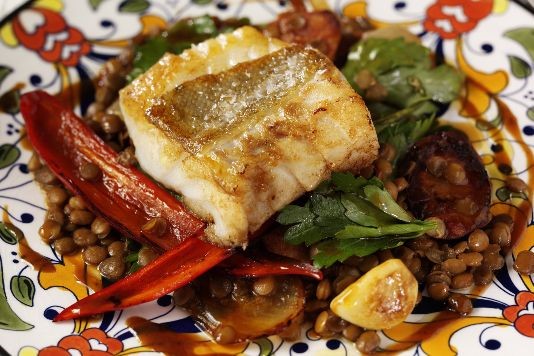The loveFOOD guide to... lentils and legumes

They’re cheap and nutritious and work with many other flavours, so why don’t we eat more lentils? Here’s our guide to some of the most popular varieties.
Lentils often come dry, and always need washing in clean running water before boiling. You can now find some varieties all ready to eat in cans and packets, which saves time. They're a good choice for midweek meals if you didn't get a chance to prepare the dried stuff.
Puy lentils
Pronounced ‘pwee’, these lentils are a dark greeny-grey in colour. They come from Le Puy in the south of France, and are the only lentil protected by a Protected Designation of Origin, or PDO (the same as Champagne and stilton cheese). They have a unique peppery taste, which is why they’re the lentils most chefs use.
They’re great in things like a big sausage casserole, or a salad of tomato and cheese. These really let their flavours shine, and they're better in these dishes than curries.
Another popular use is pairing with white fish, such as cod. This gives a nice colour contrast (as well as texture) between the slate grey lentils and gleaming white flakes of fish.
Green lentils
These have a milder flavour than puy lentils, and are best used in stews and soups as they take longer to cook at around 45 minutes. Like all lentils, they’re a good accompaniment to sausage (think lentils instead of mash). You can puree lentils to give a smoother, sauce-type consistency, and this can then be paired with roast meats as well as fish.
Roast Lebanese leg of lamb recipe
Red lentils
Red lentils have a more nutty taste than other varieties, and don’t hold their shape as well as the rest. This attribute makes them perfect for dals, soups and curries. They're really good seasoned with traditional Indian spices like cumin and turmeric.
Spiced carrot, Bramley apple and lentil soup recipe
Split pea
Used in the classic ‘London Particular’, a thick soup named after the killer smogs that blighted London in the 1950s. They’re also used in pease pudding, which slathered on a stottie cake with a slice of ham is still an extremely popular snack in the north east of England.
Fava beans
Used in many Mediterranean dishes, where they're cooked down to a thick sauce and served with pasta. They were popular in Britain as a sauce of protein in olden times though their popularity has dipped as meat became more affordable.
Mung beans
Used in Asian dishes, particularly curries and dals, these tender little beans have a slightly sweet taste. Pair them with things like paneer cheese. In Hong Kong, mung bean paste is sometimes made into ice cream or frozen into ice lollies.
You can also use mung beans to make hummus. They sprout very quickly, so they're often farmed for bean sprouts.
More cheap eats and lentils articles
Spiced leek, potato and lentil soup recipe
Comments
Be the first to comment
Do you want to comment on this article? You need to be signed in for this feature